What to Pack for Thailand? Your Ultimate Travel Packing List
Ready for your next adventure in Thailand?
Whether you’re a first time visitor or a returning traveller, packing for such a big trip can be stressful, especially when trying to decide what to bring and what to leave home.
For that reason, today we’ll take a look at which essential items can absolutely not miss from your bags before leaving for Thailand, and which ones you might be better off leaving at home!
Don’t forget to download our free Thailand Packing List PDF, which you can find at the end of this article. We’re sure it will be super useful to use to plan your travels!
Let’s jump right in.
Disclosure: This article contains affiliate links, and as Amazon associates we may get a small commission from qualifying purchases. We believe in only advertising products we trust in and use ourselves!
What to bring to Thailand:
Medicine and Toiletries
Sunscreen
Sunscreen in Thailand often contains whitening agents, in addition to probably being much more expensive than you would pay for at home. Make sure you bring enough to last you the entirety of your trip because you’ll definitely need it both in and out of the city.
If you’re planning on visiting any of Thailand’s national parks, be aware that sunscreen containing oxybenzone, octinoxate, 4-methylbenzylidene camphor or butylparaben are banned, as they cause serious damage to coral reefs.
These are our top suncreen picks:
La Roche-Posay Anthelios Melt-In Milk Body & Face Sunscreen SPF 60;
Neutrogena Ultra Sheer Dry-Touch Sunscreen with Broad Spectrum SPF 70;
Soap bar
A simple soap bar will take up much less space than if you packed liquid shower gel and shampoo, and it will also allow you to bypass the restrictions on liquids if you only travel with a cabin bag. You can also use your soap bar to do your laundry, that way avoiding having to spend money at a laundromat. And if you run out, you can simply head to any 7-Eleven shop and buy a new one!
You might also want to consider purchasing a leak-proof travel soap container, for added peace of mind. They are super affordable, and practical to use while you are on the road!
Hydration powder packets
Thailand’s climate can get extremely hot and humid, and your body might struggle to cope if you’re not used to those temperatures. A hydration packet contains a powder that, once diluted and drank with water, will help you recover faster from symptoms of dehydration.
Hydration packets are also extremely useful if you happen to catch a stomach bug. This happens quite often in Thailand (hence the name Bangkok Belly), and in bad cases you can get very quickly become dehydrated.
There are multiple brands of hydration powder packets with a great variety of flavours. That will help you drink even more water if needed. Liquid I.V. is a brand that we recommend for its efficiency and variety.
Pain killers
Getting hold of even basic pain medication in Thailand can be a little tricky, especially if you’re heading to more remote areas, so we recommend bringing your own to manage the occasional headache or sunburn.
Seasickness pills
Even if you’ve never suffered from seasickness before, we strongly recommend bringing some medication if you’re planning on travelling by boat, because you never know what the sea will throw at you in Thailand. Ideally you should bring your own, so that you can have more choice over which brand and dosage you take.
If you prefer to buy them in Thailand, you can always get a packet from 7-Eleven.
Contact lens solution
Contact solution in Thailand is usually only available in optics shops or pharmacies, and in large bottles. That’s handy if you live there, not really if you need to travel with said large bottle. The easiest thing is to bring your own supply.
If you travel with cabin bags only, a good idea is to separate enough solution to last the duration of your trip into small squeeze bottles, that way you won’t be limited by the liquids amount restriction.
Toiletry bag with a hanging hook
A toiletry bag is of course a must to keep your toiletries organised and from spilling out into your luggage. Adding a hook will allow you to keep your toiletry bag from occupying too much space by the sink, and off dirty surfaces if you’re sharing a bathroom in a hostel.
These are our top toiletry bag picks:
Micro-fibre towel
While all hotels will provide you with towels, you might not have the same luxury if you’re staying in hostels. Micro-fibre towels are the perfect solution to this problem; they are much lighter than regular towels and dry faster, while also occupying a fraction of the space.
If you get a large enough model, you can even use it as a makeshift beach towel!
These are our top micro-fibre towel picks:
Silicone squeeze bottles
If you must carry any liquids such as contact solution or sunscreen in your carry-on luggage, then silicone squeeze bottles are an absolute essential, as they allow you to easily separate your liquids in small travel size portions. That way you won’t have any issues when passing airport security.
The best are the ones made of silicone, as they are more durable and less prone to cracking than squeeze bottles made of plastic.
Clothing and Accessories
Light and breathable clothes
Because of Thailand’s hot and humid weather, your priority should be light, breathable and fast drying clothes. For this purpose, there is no better choice than linen; while it is sometimes a little pricy, linen is more durable than cotton and dries faster, making it ideal for the country’s tropical climate.
A linen button shirt is a favourite of ours to bring, as it is perfect to match with a tank-top for extra protection from the sun, or to keep mosquitoes away at night.
Along with shorts and breathable t-shirts, packing a pair of long joggers or loose yoga pants is an essential to visit certain temples where your legs need to be completely covered. A good pair of joggers is also a good lightweight replacement for hiking pants if you’re planning on exploring Thailand’s stunning nature!
A light scarf or sarong
A light scarf such as a shemagh or a sarong is a must-have when visiting Thailand. Not only are they useful to cover up when visiting temples and holy sites, they also come in handy to protect your shoulders and neck from the heat of the sun, or the blasting cold of Thai air-conditioning.
We also love using ours as blankets when travelling by train or by plane, or even as improvised beach towels!
Comfortable shoes or sandals
Durable, breathable and comfortable shoes are an absolute essential in Thailand. You’ll probably be covering quite a distance on foot, and even in the city the sidewalks can often be in pretty poor conditions.
A good pair of approach shoes is our favourite choice when visiting Thailand.
- Approach shoes are generally used when hiking towards the beginning of rock climbing routes, but are much less bulky when compared with classic hiking shoes while still being perfect to use outdoors. These type of shoes are also made to be put on and taken off easily, a plus point when visiting one of the country’s many temples!
A good pair of sandals is also an awesome option to have. Just keep in mind that using them in the city will probably leave you with black feet because of the dust and pollution. It’s nothing that won’t wash away in the shower, but it’s still something to keep in mind when choosing your footwear.
Flip-flops
While of course essential for the beach, a pair of flip-flops can be a life-saver on those days where your feet are tired and you dread putting your shoes on, or when you want to quickly drop by the 7-Eleven on the corner for a cheese toast. A pair of flip-flops are also a must-have if you’re staying in hostels and are not sure when the bathroom floor has last been cleaned.
They are also extremely practical if you’re planning on travelling by speedboat; the boats often stop a few meters away from the beach, and you’ll have to wade through the water to reach the shore. Flip-flops are obviously easier to take on and off, and you won’t have to worry about your shoes getting wet and damaged by sea water.
Hats
Especially on the islands, where the sun beats down harder, a good hat is important to protect your head from the heat. A simple baseball cap is our favourite choice, but you might prefer a wide-brim hat to also protect your neck.
Sunglasses
In addition to completing your look, the most important thing is that your sunglasses have a sufficient level of UV protection, such as Category 2 or 3, to ensure your eyes are properly shielded from the sun.
Since we like using one pair for all activities, such as hiking, going to the beach and city trips, our ideal travel sunglasses also need to be able to take a bit of a beating without breaking. For this reason, we find it’s best to buy cheap but well-built sunglasses with plastic lenses, as they’ll be less fragile and prone to shattering than glass.
Sweater or jumper
You’ll understand why carrying a lightweight sweater or jumper is a life-saver once you first experience the arctic chill that is the Thai air-conditioning. It’s especially noticeable in stores, shopping malls and in public transport, and it can be quite a shock if you’re just stepping in from the suffocating heat outside.
In addition, Northern Thailand can get quite chilly during the months of December and January, particularly in the mountains and during the night. We recommend that you keep an eye on the weather forecast if you happen to be planning a trip for that time period.
A travel outfit
Comfort is everything when travelling, especially when it’s over long distances. For this reason, you should always prepare a travel outfit, something light and comfortable that you can easily switch in and out of when on the move.
The main essentials that we recommend are a pair of light joggers and a hoodie or a jumper, along with comfy merino-wool socks and thermal clothing if you’re flying into Thailand from a cold-weathered country.
Electronics and Gear
Travel adaptor
Thailand uses four different plug types with a 220 volt current: A, B, C and O.
While you can buy a specific travel adaptor for Thailand, we instead prefer to use a universal plug adapter to make sure we’re good no matter where we are in the world.
These are our top universal travel adaptor picks:
Power banks
For those days where you forgot to charge your phone or need an extra charge on a long trip, a power bank is a must-have.
If you generally only need to recharge your phone we recommend a 10.000mAh power bank, as they are the best compromise between battery size and weight.
If you plan on recharging your laptop as well, we recommend going for a larger power bank with a capacity of at least 20.000mAh and a power output matching your device's requirement.
You should know, however, that all airline carriers within Thailand have strict restrictions on which power banks are allowed on board their planes.
As of February 2024, the restrictions are:
Batteries with capacity less than 20,000mAh or 100Wh:
Allowed in carry-on luggage
Batteries with capacity between 20,000-32,000mAh or 100-160Wh:
Limited to two per passenger in carry-on baggage.
Batteries of more than 32,000mAh or 160Wh:
Prohibited in carry-on baggage. Since you cannot carry power banks in your checked luggage, you won’t be able to bring a power bank of this size.
If your power bank does not clearly indicate the battery size and power output, it will also not be allowed on board. For this reason, you should make sure to check your device ahead of time.
Insulated water bottle
While buying water in sealed plastic bottles is the safest way to stay hydrated in Thailand, having an insulated stainless steel bottle will allow you to keep your water cool and sheltered from the heat!
These are our current favourite insulated bottle picks:
Bags and Storage
Dry-bags
Whether you’re walking in the rain or getting soaked by sea water while riding in a speedboat, dry-bags are essential to shelter your valuables and electronics from the water.
We always carry at least a few different sizes for different items, and the larger ones also work perfectly as dirty-laundry bags.
These are top dry-bag picks:
Sling bag
Sling bags are an absolutely essential item that we never travel without. Perfect for stashing sunglasses, wallets or snacks, sling bangs also help keep your valuables within hand’s reach and out of the way of pickpockets.
We've been loving the Uniqlo Round Mini Shoulder Bag, and we found it to be super practical during our time in Thailand.
Daypack
A sturdy daypack with several zipped compartments is a must-have for hikes and daily excursions, so you can carry water, snacks, towels and other essential items.
We recommend choosing a model with comfortable shoulder straps and a breathable back panel, to ensure you daypack remains comfortable to carry all day long.
Hidden travel wallet
A hidden travel wallet is the perfect system for stashing cash and important documents out of the reach of pickpockets. These simple pouches can be hidden under the waistline of your pants, making them completely invisible to other people.
Others can be tied around your neck and kept under your shirt, but we find that these are more noticeable and less comfortable to carry.
These are top travel wallet picks:
Others
Travel insurance
While having a travel insurance is not mandatory for you to visit Thailand, it is important to have if you plan on travelling for long periods of time.
In addition to coverage in case you have a serious accident and need medical care, we recommend choosing an operator that provides insurance for stolen or lost valuables as well; this is especially important for nomads who travel with laptops and filming gear!
True Traveller travel insurance
In case you were wondering, we get our travel insurance through True Traveller.
We opted for their annual insurance, given that we regularly travel a lot and it ends up being a lot more affordable that way. So far we are really happy with their service, even though we thankfully have yet to make a claim.
What NOT to bring to Thailand:
Mosquito repellant
You’ll definitely need a good mosquito repellant in Thailand, because nasty diseases such as malaria and dengue are present. What we and many other travellers have experienced, however, is that mosquito repellants from western countries are not nearly as effective as the ones that are available in Thailand.
We used a 50% DEET repellant, which is about as high as you can safely go, and still got eaten alive until we switched to a Thai brand we found at 7-Eleven. Why that is we do not know, but we stuck with the 7-Eleven repellant for the rest of our trip.
Thailand’s 7-Eleven best mosquito repellent
When you get to the closest 7-Eleven you will see different mosquito repellents from this brand. We found the pink coloured one (as shown in the photo) to be the most reliable and efficient.
On top of that it smells pretty good and is super affordable!
Jeans
Jeans are perhaps the worst item of clothing to bring to Thailand.
First of all, they will take up so much space and add so much weight to your luggage. Second, if you get caught in the rain or plan to wash your own clothes you’ll have to wait an eternity for your jeans to dry.
Heels
We really don’t recommend walking around in heels when visiting Thailand because, as we mentioned before, sidewalks are not always in the best condition, and catching a pothole or a crack in the pavement could really send you flying.
With that said, some high-end restaurants and sky bars you might be interested in visiting, especially in Bangkok, may have a dress code; if that’s the case, we suggest carrying your nicer pair of shoes with you, and using a small pair of flats that you can easily change out of.
Rain jacket
We know for sure that not everyone will agree with us, but we don’t think there’s much of a point in bringing a rain jacket to Thailand.
First of all, the weather in Thailand can be quite unpredictable and we don’t like carrying around a rain jacket just for the off-chance that it might rain. Second, when it does rains it pours down, which means that you’ll likely be dry on top and soaked on the bottom.
In addition to that, most rain jackets will quickly become unbearably hot and uncomfortable to wear because of the humidity that usually follows the heavy rain.
Extra Packing Tips
Try to use a backpack instead of a suitcase
Carrying a suitcase will be a huge hassle when moving from one location to another because of the rough pavement, and will force you to rely more on taxis and tuk-tuks. The uneven sidewalks and dirt roads are also sure to wreck the bottom and wheels of your luggage.
On the other hand, using a backpack will allow you to move more freely and make better use of public transports, saving you a bit of cash in the process. Having all of your valuables strapped to your body instead of dragging behind you will also make it more difficult for pickpockets to get a hold of your belongings.
And finally, using a backpack will limit the amount of items you can bring, which in turn will help you pack lighter and more efficiently!
Water shoes are not essential, but worth considering
The pristine waters you’ll find around many of Thailand’s beaches and islands are home to a huge variety of sea-life; even though most are harmless, some can deliver a powerful sting. Sea urchins are the ones you’re most likely to get stung by, which we unfortunately experienced ourselves.
While water shoes won’t do much if you literally end up stepping on a sea urchin, they can at least protect you if you happen to brush against one with your foot.
No e-mail or personal information is required, you just need to press the button below!
↓
And there you have it, these are all the essentials that cannot miss from your bags before you leave for Thailand, along with everything you should just leave at home!
So, time to get your bags ready?




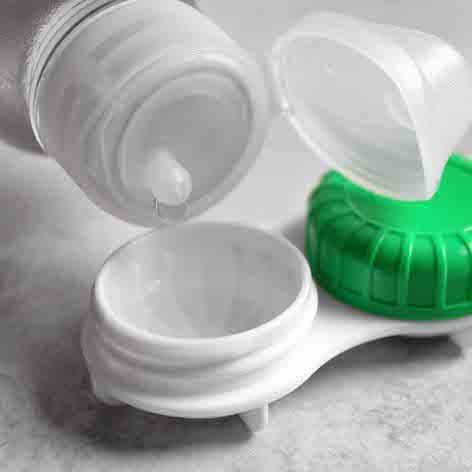





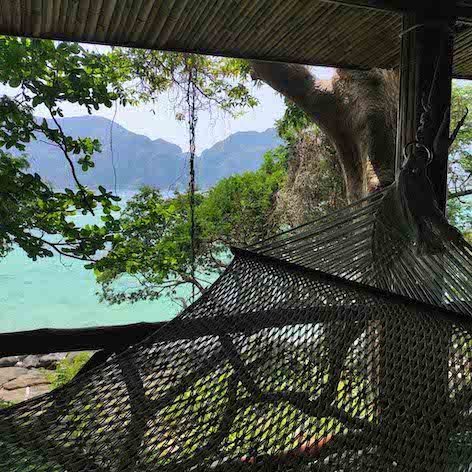
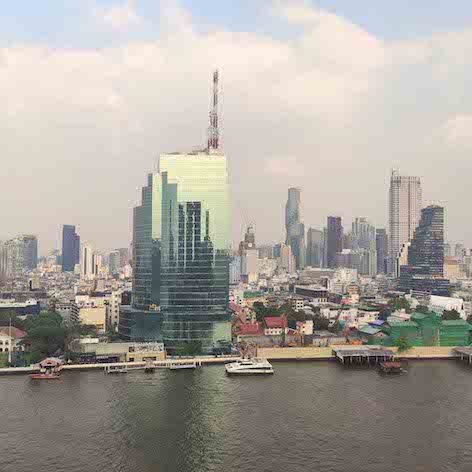

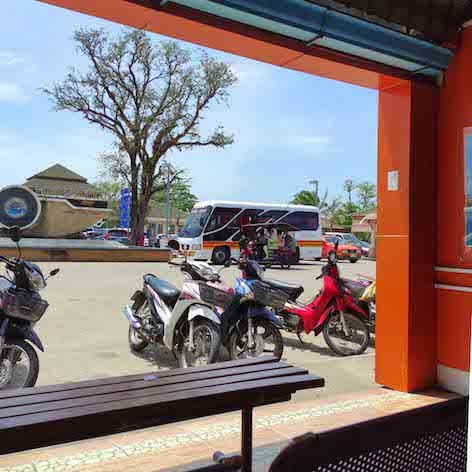

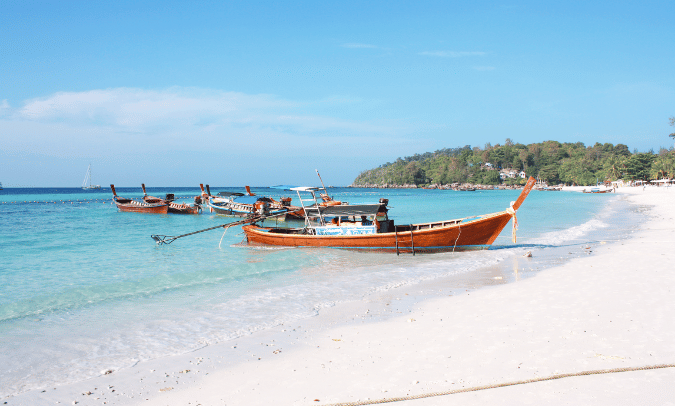




Scoot is a low cost airline subsidiary of Singapore Airlines that offers cheap flights across the majority of Southern Asia and Australia, with a few destinations in Europe and the Middle-East. But is the incredibly affordable price for a ticket worth sacrificing a few comforts and luxuries?